As a horse owner, you’re not only concerned about proper nutrition and quality care for your horse, but you also want him to look and feel his best at all times. Whether you’re preparing for a horse show or you simply like your horse to look like a champion at home, grooming your horse is an important part of horse care. From long flowing manes and silky smooth tails to sleek shiny coats, here are some insider tips you can use when you groom your horse that’ll help make him look his best all the time.
Body Grooming
First, you’ll want to start off by using a quality curry comb to groom your horse. Curry combs are designed to remove dirt and loosen dead hair plus they are great for massaging your horse’s skin and stimulating the release of natural oils that are in his coat. There are several different types of curry combs, including rubber, plastic and metal curry combs, but rubber curry combs are the best ones to use on your horse. Metal curry combs are popular, but they can be harsh especially on non-fleshy areas of your horse plus they can easily damage and break your horse’s hair. To use a curry comb correctly, you’ll want to make small circular motions starting at your horse’s neck and then gradually work your way down across his body and legs. Try to keep even, consistent pressure on his coat as you move across his body, massaging and working to loosen the caked mud, dirt, and loose hair. Periodically while you’re grooming, you’ll need to take a break and tap the curry comb against a hard surface to remove the dirt and hair that’s been accumulating in the comb. If you find that your horse is sensitive to being touched or groomed, you can alternately try using a curry mitt which easily fits over your entire hand and is especially good for sensitive horses.
Next, you’ll want to thoroughly brush your horse’s coat by using several different types of body brushes designed for grooming horses. You’ll want to start with a hard bristle brush and begin brushing your horse’s neck first and then progressively brush his body and finally finish with his legs. As you are brushing your horse, try to use flicking motions with the brush which will help to remove the loosened hair and dirt that you brought up with the curry comb. Next, follow with a medium bristle brush to further remove the loose dust and hair, and finally finish off your brushing by using a soft bristle brush. Soft brushes are perfect for sensitive areas such as your horse’s face plus they’re great for capturing fine particles of dust and will also help smooth the hair so it lies flat. You’ll always want to brush your horse in the direction of the hair growth and, remember, the more elbow grease you use while brushing, the more natural shine you’ll bring out in your horse’s coat. If it’s within your budget, a grooming vacuum is also a great tool to use to help remove deep dirt and loose hair as well.
Finally, use either baby wipes or soft, slightly dampened towels or sponges to carefully remove dirt from around your horse’s eyes and nostrils, and then use another towel or sponge to remove any remaining dirt from his coat. For special occasions or if you’re planning to show your horse, many professionals like to use topical grooming products for that extra final touch. There’s a wide assortment of products you can use, including coat polishes to repel dust and add shine to your horse’s coat, stain removers to help remove manure or urine stains, color enhancement products and sunscreen products designed for horses that have light colored skin on their face and muzzles.
When you’re finished grooming your horse, you’ll want to clean the brushes and combs by soaking them in soap and water, then rinse them thoroughly and let them dry before you put them away.
Manes and Tails
Keeping your horse’s mane and tail clean and moisturized is an important part of grooming your horse, especially if you want his tail to be long and thick, and his mane to look radiant and healthy. If your horse’s mane and tail are dirty or his skin is itchy and dry, he’ll probably start rubbing and scratching which is going to cause damage and breakage to the hair.
To take care of your horse’s mane and tail, you can start by deep cleaning with warm water and shampoo, gently working the shampoo thoroughly into his mane and tail. Some shampoos need to be diluted with water first, while others can be applied directly (follow the directions on the label). After shampooing and thoroughly rinsing out all the shampoo from his mane and tail, you can then apply a moisturizing conditioner. While there are no set rules on how often you should bathe your horse, try not to overdo it since over-washing him could strip his mane and tail of their natural oils.
Let your horse’s mane and tail naturally dry, then use a wide tooth comb to smooth the hair. You can use a small amount of hair detangler first, which will remove any knots and tangles and will also help prevent new ones from forming. Just apply a small amount of the product into the palm of your hand, rub your hands together, and then gently run your hands and fingers through your horse’s mane and tail to evenly distribute the detangler throughout the hair. You’ll want to use grooming tools that are made specifically for horse’s manes and tails; stay away from using human hair brushes that can easily cause hair breakage, split ends and hair loss. When you groom your horse’s tail, you’ll want to hold the tail hairs in one hand and comb it out using the other hand. As part of your daily routine, you’ll also want to use a dandy brush on the dock of your horse’s tail – this will remove loose dander and dirt that can make your horse itchy and rub his tail.
For that final “professional” look, use tail scissors to trim the bottom of your horse’s tail straight across, giving it a thick, boxy look. As you trim, cut only the longest hairs across the bottom of the tail so that it’ll have a neat and tidy appearance and will also prevent it from dragging on the ground.
You may also want to braid your horse’s mane and tail at home – this not only will help prevent breakage and damage, but braiding your horse’s mane will also help “train” it to lie smooth and flat in one direction. If you’re showing your horse, you can use a braiding spray product which will make braiding easier and will also help make your braids look neat and tight. If you prefer not to braid your horse’s tail, an alternative is to loosely tie knots in your horse’s tail, which will also help keep it off the ground if it’s long. Simply section off several parts of the tail and tie loose figure-eight knots in the long sections of the hair.
Another popular option to help protect your horse’s tail hairs from being damaged is to use a tail bag. If you decide to use a tail bag, follow the instructions carefully and place it well below the tailbone, removing it daily to check on the condition of your horse’s tail. If you turn your horse out into a paddock or arena during the day, you’ll want to remove the tail bag first, since it could get snagged or stuck on a fence post and cause injury to his tail.
After a few sessions of routinely maintaining and conditioning your horse’s mane and tail, you’ll find that they’re now a lot easier to take care of and are less prone to getting knotted and tangled. Also, remember that healthy hair comes from the inside out, so you’ll need to make sure you’re providing your horse with good, quality hay. You can also give your horse a good biotin supplement such as Hoof Renu, which is great for both hoof health as well as healthy hair growth.
Muzzle, Face and Ears
Many horse owners like to tidy up their horse’s jawline, muzzle and ears by trimming and clipping shaggy or stray hairs. For clipping around your horse’s face and ears, you can try using cordless clippers with #10 blades to help give him that clean, polished look. You can start by trimming around his jawline, using light pressure as you go along. Next, if you want to trim your horse’s ears, lightly fold your horse’s ears from behind so that the edges in front are pressed together. You can then trim and tidy up the hairs that are sticking out, carefully making slow, downward passes as you go along. If you decide to trim your horse’s whiskers (some people prefer to keep their horse’s whiskers long), you can carefully trim them with your clippers, also applying very little pressure. Remember, your horse may not be comfortable having electric clippers around his face, so you’ll want to slowly introduce him to the process and let him gradually get used to the sound and vibration of the clippers.
Hooves and Legs
Keep your horse’s hooves clean by picking them out daily with a hoof pick, even if you’re not planning to ride that day. By taking care of his feet every day, you’ll be able to immediately identify any problems that need to be addressed including removing rocks or debris from his hooves or locate a loose or missing shoe. If you’re showing your horse and it’s within the rules of your riding discipline, you can apply a hoof polish product for that extra special touch – you can use either a dark polish for dark hooves, or a clear polish for light colored hooves. To apply, you’ll want to make a straight line right along the coronary band with the polish. Then, you can apply even, smooth lines down to the toe. You’ll want to give the polish some time to dry before you take your horse out of the grooming area, so that dirt and dust doesn’t stick to the wet polish.
To tidy up the look of your horse’s legs, you can use your clippers to trim any loose hairs around his legs and fetlocks. Keeping the hair clipped short on your horse’s legs will not only help keep his legs dry and clean, but it will also help your horse if he’s prone to scratches. For an extra touch, if your horse has white socks, you can use blue shampoo to help bring out the white color, and then apply baby powder to help enhance the whiteness.
Grooming your horse daily not only keeps his skin and coat healthy, but it also gives you a chance to spot anything out of the ordinary, such as cuts, scratches or swelling. Fortunately, most horses enjoy the extra attention of being groomed and they look forward to the routine of regular brushing and pampering care. And, by spending this extra time together when you groom your horse, you’ll also get to know each other better which will help build and strengthen the bond between the two of you. Here’s a checklist of some of the items you can use when you groom your horse. Do you have special grooming tips that you can share?

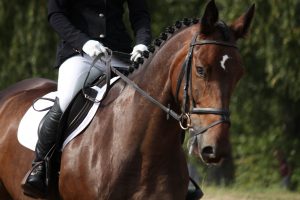
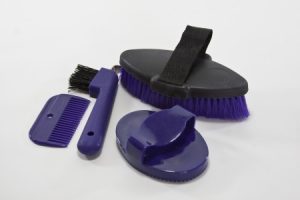
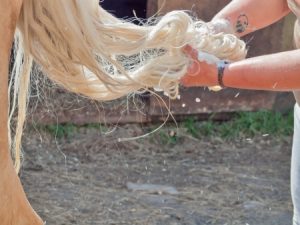
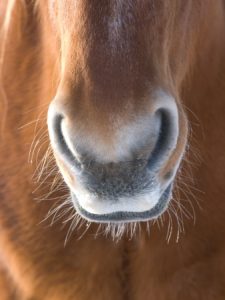
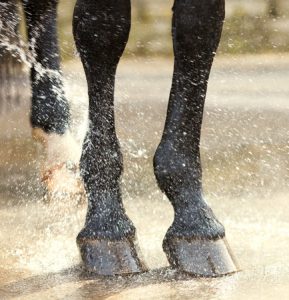


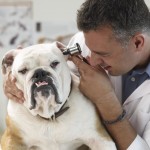

Leave a Reply